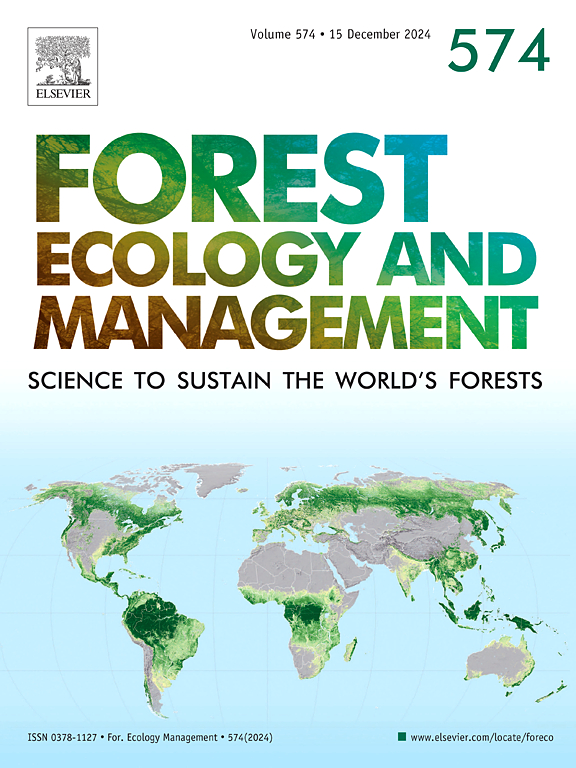Do Pinus radiata hybrids represent a solution to forestry’s wilding conifer problem?
IF 3.7
2区 农林科学
Q1 FORESTRY
引用次数: 0
Abstract
Afforestation by non-native pines has led to substantial conifer invasions globally, damaging ecosystems and resulting in substantial ongoing control costs. Any further new non-native conifers being introduced to forestry programmes must therefore be assessed from the perspective of spread risk prior to their widespread establishment. Pinus radiata × attenuata is a hybrid taxon that has been trialled for forestry suitability in New Zealand. The taxon performs favourably compared to Pinus radiata at higher elevation sites due to its greater cold tolerance, and as such is now beginning to be planted by the forestry industry at higher elevation sites that are typically unsuitable for P. radiata afforestation. It has been assumed that the likelihood of invasive spread by P. radiata × attenuata from areas of afforestation is low, however this has not been formally assessed. Here, we undertook assessments of cone production, cone opening, seed viability, seed dispersal, seedling establishment, and sapling survival for P. radiata hybrids with P. attenuata. In addition, we undertook analogous assessments of P. radiata to provide a baseline for comparison, given its propensity to establish outside of cultivation. Our results indicate that while cone production and seedling survival are higher for the hybrids than P. radiata at high elevation sites, cone opening requires significantly higher temperatures. On average, only 3.6 % of ripe cones on mature (26-year-old) trees opened on the P. attenuata × radiata trees in field conditions suggesting that the strong cone serotiny may present a barrier to invasion for this taxon. Based on our current data, we suggest that the spread risk from these P. radiata hybrids is likely to be lower than that from P. radiata. Future work should examine the longevity of seed in aerial seed banks and include field surveys to assess for wilding spread from mature P. radiata with attenuata hybrid stands. We emphasise, however, that the high temperatures required to break cone serotiny appears to be the only factor limiting the spread of P. radiata hybrids with P. attenuata. Any back-crossing of these hybrids with P. radiata in future breeding programmes may lower the cone-opening temperatures and remove this barrier to spread. Further, the high temperatures generated by forest fires will lead to more extensive release of seed from the aerial seed banks and should thus be treated as incursion events. The likelihood of such fires is expected to increase in predicted future climate scenarios.
求助全文
约1分钟内获得全文
求助全文
来源期刊

Forest Ecology and Management
农林科学-林学
CiteScore
7.50
自引率
10.80%
发文量
665
审稿时长
39 days
期刊介绍:
Forest Ecology and Management publishes scientific articles linking forest ecology with forest management, focusing on the application of biological, ecological and social knowledge to the management and conservation of plantations and natural forests. The scope of the journal includes all forest ecosystems of the world.
A peer-review process ensures the quality and international interest of the manuscripts accepted for publication. The journal encourages communication between scientists in disparate fields who share a common interest in ecology and forest management, bridging the gap between research workers and forest managers.
We encourage submission of papers that will have the strongest interest and value to the Journal''s international readership. Some key features of papers with strong interest include:
1. Clear connections between the ecology and management of forests;
2. Novel ideas or approaches to important challenges in forest ecology and management;
3. Studies that address a population of interest beyond the scale of single research sites, Three key points in the design of forest experiments, Forest Ecology and Management 255 (2008) 2022-2023);
4. Review Articles on timely, important topics. Authors are welcome to contact one of the editors to discuss the suitability of a potential review manuscript.
The Journal encourages proposals for special issues examining important areas of forest ecology and management. Potential guest editors should contact any of the Editors to begin discussions about topics, potential papers, and other details.
 求助内容:
求助内容: 应助结果提醒方式:
应助结果提醒方式:


